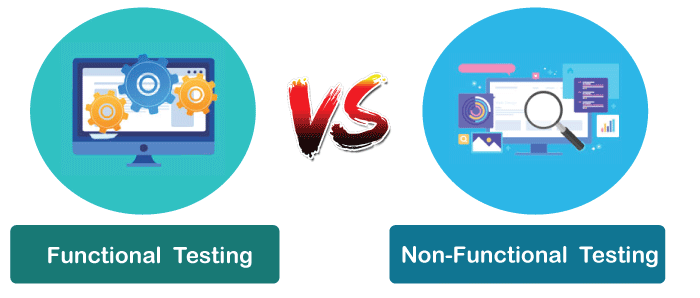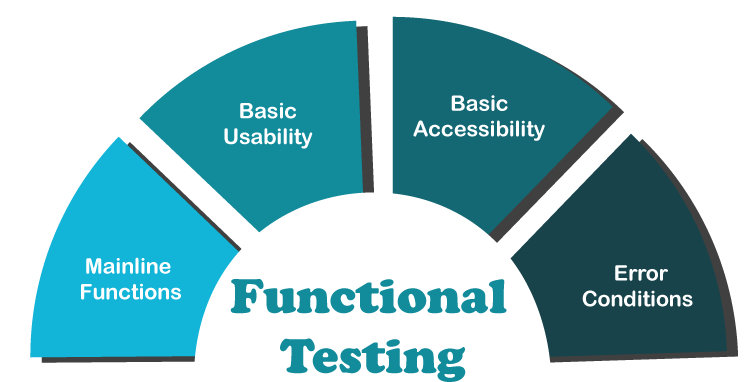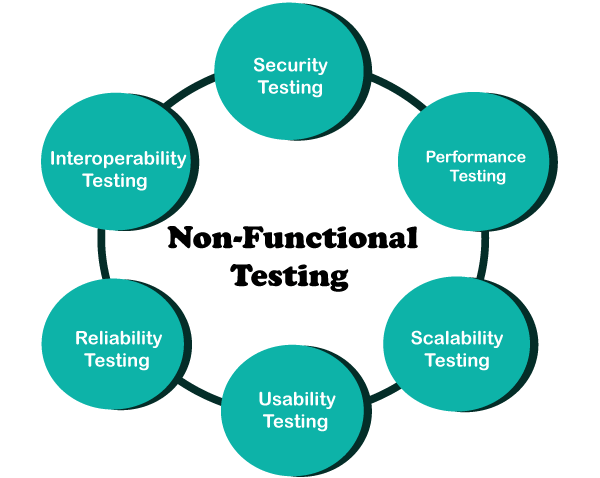Difference Between Functional and Non-Functional Testing
Functional testing focuses on whether the software or system works as intended, i.e., whether it meets the functional requirements. It involves testing the features and functionalities of the software, such as input/output, error handling, and user interface.
For example, if you are testing a calculator app, you would check whether it can perform basic arithmetic operations like addition, subtraction, multiplication, and division correctly. You would also check if the user interface is user-friendly, the buttons are working correctly, and the app is responsive to user input.

Non-functional testing, on the other hand, is focused on testing the non-functional aspects of the software, such as performance, security, usability, reliability, and compatibility. Non-functional testing helps to ensure that the software meets the quality standards and performs well under different conditions.
For example, if you are testing a website, you would check whether it can handle many concurrent users without slowing down or crashing. You would also check whether the website is secure from potential cyber threats like hackers or viruses. Additionally, you would check whether the website is accessible and easy for people with disabilities.
What is Functional testing?
Functional testing is software testing that focuses on testing the functionality of the software or system. The main goal of functional testing is to ensure that the software or system behaves as intended and meets the functional requirements specified in the design or requirements documentation.
Functional testing involves testing the features and functionalities of the software, such as input/output, error handling, user interface, and data manipulation. The testers typically use test cases or scenarios to verify that the software meets the functional requirements.
For example, if you are testing an e-commerce website, functional testing would involve testing whether the website can perform tasks such as adding items to the cart, applying discounts, calculating taxes, and processing payments correctly. The testers would also check whether the website is user-friendly and whether the links, buttons, and menus work as intended.

Functional testing can be performed manually or using automated testing tools. It is typically done after the completion of unit and integration testing and before the start of system testing.
What is Non-Functional Testing?
Non-functional testing evaluates a software program's performance, dependability, usability, and other non-functional elements. It differs from functional testing, which verifies an application's functional requirements.

Non-functional testing encompasses a wide range of tests, including:
- Performance testing examines how well an application operates under various loads and stressful circumstances. It assesses how quickly the program responds to user requests, how much traffic it can withstand, and how well it operates under various network circumstances.
- Security testing guarantees the application is safe from unauthorized access, data breaches, and other security risks. It scans the application's code and database for vulnerabilities and assesses how well it secures sensitive data.
- Usability testing is used to evaluate the application's usability and simplicity. It assesses how effectively users can navigate the program, how user-friendly the user interface is, and how readily users can complete their tasks.
- Reliability testing ensures the program functions appropriately with various hardware, software, and operating system combinations. It determines whether the program works correctly on various devices, browsers, and platforms.
- Scalability testing determines how effectively a program can manage rising user loads and data quantities. It assesses the application's ability to scale up or down to suit changing business demands.
- Interoperability testing is non-functional testing that evaluates how well a software application can work with other systems or components. It checks whether the application can communicate and exchange data with other systems or devices without compatibility issues.
Key Differences between functional and non-functional testing
Functional Testing
- It focuses on testing the functionality of the software or system.
- Verifies whether the software meets the functional requirements.
- It involves testing the features and functionalities of the software, such as input/output, error handling, and user interface.
- Tests are typically conducted using test cases or scenarios that validate the functional requirements.
- It can be performed manually or using automated testing tools.
- It was done after unit testing and integration testing and before system testing.
Non-Functional Testing
- It focuses on testing the system's or software's non-functional components.
- Checks to see if the software satisfies the non-functional requirements, including performance, security, usability, reliability, and compatibility.
- It involves putting the software's quality characteristics, including response time, scalability, availability, and maintainability, to the test.
- Several testing methods, including load testing, stress testing, security testing, and usability testing, are used.
- Specialist testing techniques and frameworks are frequently needed to measure and assess non-functional requirements.
- Many development lifecycle stages, including design, deployment, and maintenance, can be completed.
Benefits of Functional Testing and Non- Functional Testing
Benefits of Functional Testing
- It makes it possible to make that the program complies with the functional specifications listed in the design or requirements documentation
- Reduces the cost and difficulty of repairing software faults and problems later on by finding them early in the development cycle.
- It assures users that the software will work as intended and meet their expectations.
- Ensuring that the user interface, input/output, and error handling correctly contributes to enhancing the user experience.
- Ensures that the software is of a high standard and satisfies the requirements of both the users and the business.
Benefits of Non-Functional Testing
- Ensuring the program satisfies the non-functional requirements, including performance, security, usability, reliability, and compatibility.
- Detects performance stumbling blocks, security holes, usability problems, and other non-functional flaws before they affect end users.
- Ensuring the software is responsive, scalable, and user-friendly enhances the user experience.
- Ensures that the program complies with rules and standards set by the industry.
- Increases trust in the software's performance in real-world circumstances and under different loads and conditions.
Difference Table
| Functional testing |
Non-functional testing |
| It focuses on testing the functionality of the software or system. |
It focuses on testing the non-functional aspects of the software or system. |
| Verifies whether the software meets the functional requirements. |
Verifies whether the software meets the non-functional requirements such as performance, security, usability, reliability, and compatibility. |
| It involves testing the features and functionalities of the software, such as input/output, error handling, and user interface. |
It involves testing the quality attributes of the software, such as response time, scalability, availability, and maintainability. |
| Tests are typically conducted using test cases or scenarios that validate the functional requirements. |
Tests are conducted using various techniques such as load testing, stress testing, security testing, and usability testing. |
| It can be performed manually or using automated testing tools. |
Often requires specialized testing tools and frameworks to measure and evaluate the non-functional requirements. |
| Done after unit testing and integration testing and before system testing. |
It can be done at various stages of the development lifecycle, from design to deployment and maintenance. |
|



 For Videos Join Our Youtube Channel: Join Now
For Videos Join Our Youtube Channel: Join Now










